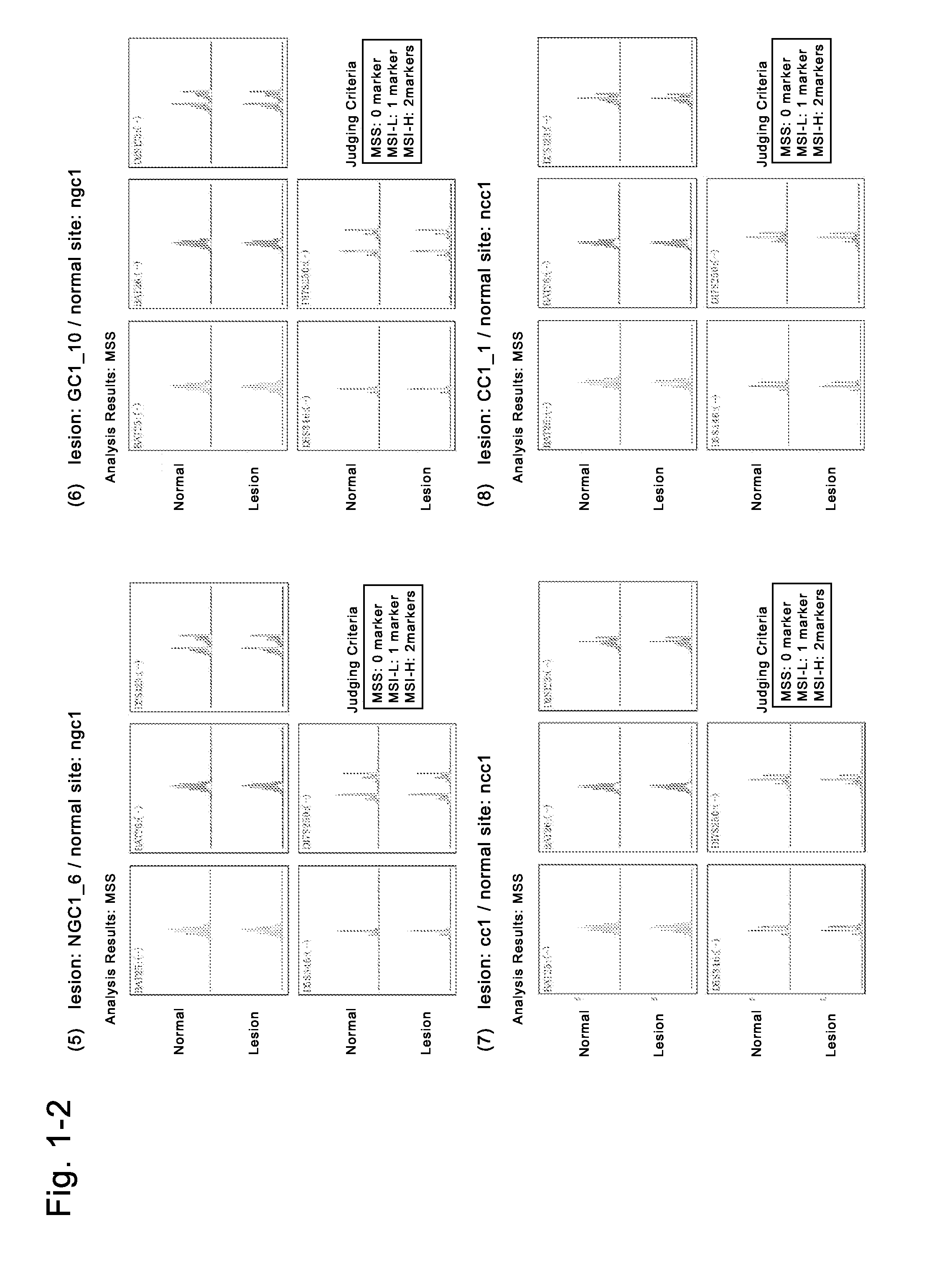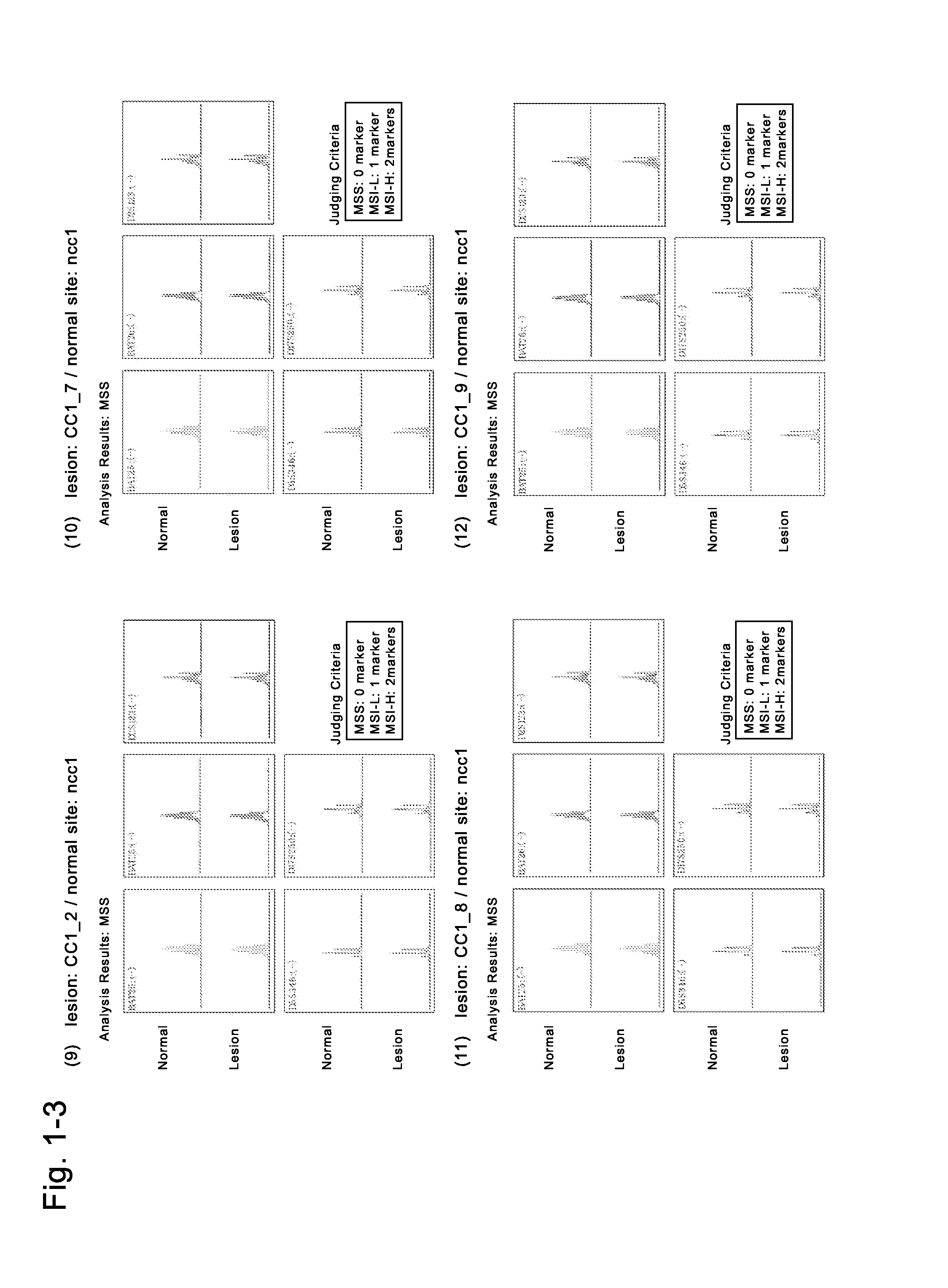Induced malignant stem cells
a stem cell and malignant technology, applied in the field of induced malignant stem cells, can solve the problems of abnormal gene expression, difficult or even impossible to determine, and difficult to retain aberrations, and achieve the effect of high or low degree of methylation
- Summary
- Abstract
- Description
- Claims
- Application Information
AI Technical Summary
Benefits of technology
Problems solved by technology
Method used
Image
Examples
example 1
Preparation of Induced Malignant Stem Cells from Cells (GC2) Derived from Cancer Tissues of a Gastric Cancer Patient
[0220]The fresh cancer tissues of a gastric cancer patient of donor No. 1 (medical information: a 67-year-old Japanese woman with a gastric cancer, blood type O, no chemotherapy, no radiotherapy, no immunosuppressive therapy, no smoking history, no drinking history, no drug addiction, no drug therapy, HIV-negative, HCV-negative, HBV-negative, syphilis-negative) which had been refrigerated for several hours and transported in a preservation solution (Hanks' solution supplemented with kanamycin and Fungizone) were used to isolate cells (GC2). The fresh non-cancer tissues of the patient were also used to isolate cells (NGC2). To the resultant cells derived from the gastric (solid) cancer tissues, the solution of the four Sendai viral vectors containing any of four genes (POU5F1, KLF4, SOX2, c-Myc) (DNAVEC CytoTune iPS (DV-0301-1)) was added for genetic transduction, where...
example 2
Preparation of Human Induced Malignant Stem Cells from Cells (CC3) Derived from Cancer Tissues of a Colon Cancer Patient
[0234]The fresh cancer tissues of a colon cancer patient of donor No. 2 (medical information: a 77-year-old Japanese man with a sigmoidal colon cancer, blood type A, no chemotherapy, no radiotherapy, no immunosuppressive therapy, no smoking history, drinking history: 1 bottle of beer / day, no drug addiction, no drug therapy, HIV-negative, HCV-negative, HBV-negative, syphilis-negative) which had been refrigerated for several hours and transported in a preservation solution (Hanks' solution supplemented with kanamycin and Fungizone) were used to isolate cells (CC3). The fresh non-cancer tissues of the same donor were also used to isolate cells (NCC3). To the resultant cells derived from the cancer tissues of the colon cancer patient, the solution of the four Sendai viral vectors containing any of four genes (POU5F1, KLF4, SOX2, c-Myc) (DNAVEC CytoTune iPS (DV-0301-1))...
example 3
Preparation of Retroviral Vectors
[0244]The plasmids of the three retroviral vectors containing any of three genes, POU5F1-pMXs, KLF4-pMXs, and SOX2-pMXs, were transduced into Plat-GP cells (packaging cells for preparing a pantropic retroviral vectors) using Fugene HD (Roche; Cat No. 4709691) to thereby prepare solutions of the retroviral vectors. The details of the procedure are as described below.
[0245]
[0246]POU5F1-pMXs, KLF4-pMXs, and SOX2-pMXs were the constructed vectors (Table 9).
[0247]The amounts of the respective vectors were as follows: 5 μg of POU5F1-pMXs, 2.5 μg of KLF4-pMXs, 1.25 μg of SOX2-pMXs, 1.25 μg of Venus-pCS2, 5 μg of VSV-G-pCMV, 1.25 μg of GFP-pMXs (Cell Biolab), and 45 μL of FuGENE HD.
[0248]
[0249]POU5F1-pMXs, KLF4-pMXs, and SOX2-pMXs were the constructed vectors (Table 9).
[0250]The amounts of the respective vectors were as follows: 5 μg of POU5F1-pMXs, 2.5 μg of KLF4-pMXs, 1.25 μg of SOX2-pMXs, 1.25 μg of Venus-pCS2, 5 μg of VSV-G-pCMV, 1.25 μg of GFP-pMXs, and...
PUM
| Property | Measurement | Unit |
|---|---|---|
| Fraction | aaaaa | aaaaa |
| Fraction | aaaaa | aaaaa |
| Time | aaaaa | aaaaa |
Abstract
Description
Claims
Application Information
 Login to View More
Login to View More - R&D
- Intellectual Property
- Life Sciences
- Materials
- Tech Scout
- Unparalleled Data Quality
- Higher Quality Content
- 60% Fewer Hallucinations
Browse by: Latest US Patents, China's latest patents, Technical Efficacy Thesaurus, Application Domain, Technology Topic, Popular Technical Reports.
© 2025 PatSnap. All rights reserved.Legal|Privacy policy|Modern Slavery Act Transparency Statement|Sitemap|About US| Contact US: help@patsnap.com



